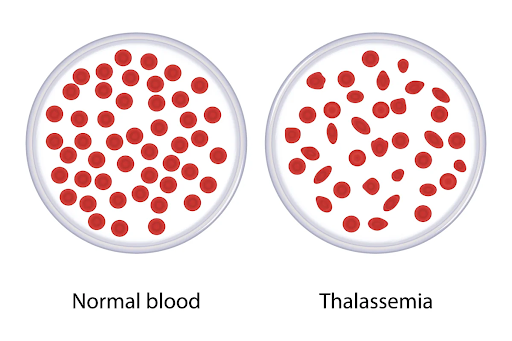Thalassemia is a genetic blood disorder that affects the body’s ability to produce healthy hemoglobin. This leads to anemia, weakness, and other long-term health concerns. Although thalassemia can be challenging, the right treatment plan, early diagnosis, and regular follow-ups can help patients live healthier and more stable lives. This guide explains the causes, treatment steps, and what life looks like after care, in a simple and user-friendly way.
What Causes Thalassemia?
Thalassemia is an inherited disorder, meaning it passes from parents to children through genes. A person may carry the thalassemia gene without showing symptoms, but if both parents are carriers, there is a higher chance the child may have the condition.
Common causes include:
- Gene mutations that reduce or stop hemoglobin production
- Family history of thalassemia
- Both parents being carriers
- Ethnic background, as it is more common in South Asia, the Mediterranean, and the Middle East
Understanding the cause helps families identify risks early and plan appropriate medical support.
Types of Thalassemia
There are two main types, each with varying severity:
1. Alpha Thalassemia
Occurs when alpha-globin genes are affected.
Ranges from mild anemia to severe complications.
2. Beta Thalassemia
Happens when beta-globin genes are impacted.
Severe forms may require regular blood transfusions.
Symptoms to Look Out For
Many symptoms appear in early childhood, but some may show later depending on severity.
Common signs include:
- Excessive tiredness
- Pale skin
- Slow growth in children
- Bone deformities
- Enlarged spleen
- Frequent infections
If these symptoms appear, early screening helps ensure timely treatment.
Diagnosis of Thalassemia
Doctors usually perform:
- Blood tests (CBC, hemoglobin electrophoresis)
- Genetic testing
- Iron studies
- Physical examination
Accurate diagnosis helps in planning long-term care and preventing complications.
Treatment Process for Thalassemia
Treatment depends on how severe the condition is. The goal is to maintain healthy hemoglobin levels and reduce complications.
1. Regular Blood Transfusions
Patients with moderate to severe thalassemia often need transfusions to maintain normal hemoglobin levels.
These help reduce weakness and improve energy levels.
2. Iron Chelation Therapy
Repeated transfusions increase iron in the body. Chelation therapy removes this excess iron to protect the heart, liver, and other organs.
3. Bone Marrow or Stem Cell Transplant
This is currently the only potential cure for certain forms of thalassemia.
A matched donor is required, usually a sibling, and the process needs expert medical care.
4. Medications & Supplements
Doctors may advise medicines to support blood production, along with vitamins like folic acid.
5. Lifestyle and Diet Support
A healthy diet, regular check-ups, and infection prevention are extremely important.
Understanding Thalassemia Treatment Cost in India
The Thalassemia Treatment Cost in India can vary based on the severity of the condition, number of transfusions needed, medications, and whether bone marrow transplant is required. India has become a preferred destination because treatment is more affordable compared to many other countries while still offering advanced medical care.
Life After Thalassemia Treatment
Life after treatment depends on regular monitoring and following medical advice. Many patients grow up to lead normal, active lives with the right support.
What Life Looks Like After Care
- Regular follow-ups with a hematologist
- Maintaining iron levels through chelation
- Monitoring heart and liver health
- Healthy eating habits
- Staying active and avoiding smoking/alcohol
- Support groups and counseling for emotional wellbeing
Children treated early often show significant improvement in growth, activity levels, and learning capabilities.
Conclusion
Understanding thalassemia helps families make informed decisions. With modern treatment options, early diagnosis, and consistent care, living a balanced and healthy life is completely achievable. India offers some of the most advanced treatment facilities at affordable costs, making it a strong choice for families seeking quality medical care.















